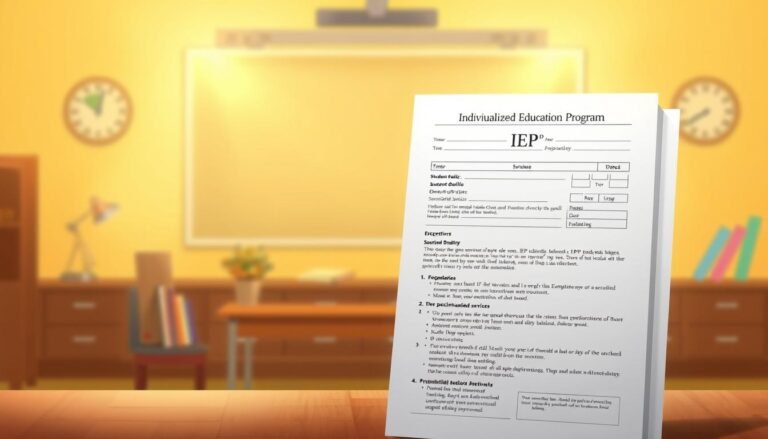
Engaging Your Child in Their IEP: Fostering Independence and Ownership
Introduction
Imagine a world where children with special needs take charge of their learning journey. They actively participate in creating their educational plans, voice their needs, and advocate for themselves. This isn’t just a dream; it’s an achievable reality when it comes to Engaging Your Child in Their IEP: Fostering Independence and Ownership. Transitioning from passive recipients of special education services to empowered advocates is crucial for a child’s development. With the right techniques, parents and educators can create an environment that nurtures independence and ownership, ultimately equipping children with the skills they need for a successful future.
In this article, we will explore the vital steps and strategies that can help parents and educators engage children in their Individualized Education Programs (IEPs). We’ll dive into real-world case studies, practical tips, and the hurdles often faced in this crucial process. By the end, you will be inspired to take actionable steps towards fostering a sense of ownership in your child’s education.
Understanding IEPs and Their Importance
What is an IEP?
An Individualized Education Program (IEP) is a legal document tailored to meet the unique educational needs of a child with disabilities. The IEP outlines specific learning goals, services required, and evaluation measures, making it a roadmap for educational success.
The Role of Engagement
Engaging Your Child in Their IEP: Fostering Independence and Ownership is about more than just participation. It involves empowering children to understand their learning preferences and challenges, express their aspirations, and actively contribute to their educational plans.
Why Independence Matters
Promoting ownership in a child’s education fosters:
- Self-advocacy: The ability to articulate needs and desires.
- Confidence: Belief in one’s capabilities and potential.
- Responsibility: Understanding the value of personal effort and agency.
Strategies for Engagement
Starting Early: Introducing IEP Concepts
Age-Appropriate Discussions
It’s essential to introduce the concept of the IEP as early as possible. Young children can engage in simple conversations about their feelings on school, what they enjoy, or what challenges they face.
Example: A child who struggles with reading could be encouraged to express their preferences, such as wanting to hear stories instead of reading independently.
Active Participation in the IEP Process
Involvement in Meetings
Encouraging your child to participate in IEP meetings sends a strong message: their voice matters. Allow them to express their opinions on accommodations and goals.
| Meeting Role | Child’s Input |
|---|---|
| Present Goals | Minor input on preferences |
| Discuss Accommodations | Ask for alternatives they find useful |
| Evaluation | Share feelings about progress |
Case Study 1: Mia’s Story
Mia, a 9-year-old with ADHD, often felt sidelined during IEP meetings. Her parents decided to implement a strategy of asking Mia to prepare her own agenda for the meeting. Mia wrote down her thoughts and feelings, effectively communicating her needs.
Analysis: Mia’s careful preparation allowed her to articulate her experiences and preferences, increasing her self-advocacy and involvement in her learning process.
Developing Self-Reflection Skills
Journaling and Guided Questions
Encouraging journaling can help children reflect on their learning experiences. Guided questions such as "What was challenging today?" or "What made you proud?" can be beneficial.
Creating a Visual IEP
Engaging with Visuals
Using visual aids like charts or drawings to represent goals can make the IEP more engaging for children.
- Goal Chart: Break down goals into visual components (images/symbols).
- Progress Tracker: Use stickers or stamps for milestones achieved.
Encouraging Peer Interaction
Engaging a child in conversations with peers who have IEPs can foster a sense of community. They can learn from one another’s experiences.
Case Study 2: Jack’s Peer Group
Jack, a middle school student with autism, joined a support group where peers exchanged IEP experiences. This interaction helped Jack recognize he wasn’t alone, reducing his anxiety about self-advocacy.
Analysis: Jack’s confidence grew as he learned from peers, showing the power of collaborative learning and community support.
Overcoming Hurdles
Common Challenges
Engaging your child in their IEP can come with obstacles:
- Resistance to Participation: Many children, particularly those with anxiety or low self-esteem, may resist getting involved.
- Communication Gaps: Children may struggle to articulate their thoughts, making it difficult for them to engage meaningfully.
Strategies to Address Challenges
Utilize Technology: Mobile apps or digital platforms can provide an engaging medium for children to express preferences.
Foster Open Communication: Regular check-ins outside formal meetings can help children feel comfortable discussing their feelings.
- Build Rapport with Professionals: Establishing a strong relationship with teachers and therapists can create a supportive network.
Creating a Safe Environment
Implementing small, consistent practices can help children feel secure when discussing their education. Ensure they understand that their contributions are valid and necessary.
Empowering Parents and Educators
Training and Resources
Providing training for parents and educators on child engagement is essential. Workshops that teach strategies for effective communication and encouragement can enhance IEP implementations.
Collaboration with School Staff
Building partnerships with school staff ensures everyone is aligned in promoting independence and ownership for children.
Case Study 3: The Williams Family
The Williams family collaborated closely with their school’s special education team. By incorporating their child’s voice in meetings and decisions, they reported significant improvements in their child’s self-esteem and engagement.
Analysis: Effective collaboration creates a unified approach, showing that educational success is a shared responsibility between home and school.
Assessing Progress and Celebrating Success
The Importance of Review
Regular review of an IEP ensures that goals are being met and makes necessary updates or changes. Kids should be involved in these periodic discussions.
Celebrating Milestones
Recognizing accomplishments, even small ones, can reinforce positive behavior and encourage future engagement.
| Milestone | Celebration Idea |
|---|---|
| Setting a goal | Family dinner |
| Achieving a milestone | Small reward (sticker, toy) |
| Completing an IEP task | Special activity |
Conclusion
Engaging Your Child in Their IEP: Fostering Independence and Ownership is not a straightforward path, but it is an incredibly rewarding journey. By actively participating in their IEP process, children develop critical life skills that extend far beyond academia. This cornerstone of special education leads to self-advocacy, ownership, and ultimately, success.
As parents and educators, the onus is on us to create environments that foster these qualities. Strive to engage in meaningful conversations, utilize creative tools, and celebrate every step your child takes towards independence. Together, we can illuminate their paths and ensure they flourish.
FAQs
1. How can I start involving my child in their IEP?
Begin by having simple conversations about their learning experiences and preferences. Encourage them to voice opinions during IEP meetings.
2. What if my child is resistant to participating?
Try to engage them using visual aids or technology. Create a safe environment where they feel comfortable sharing their thoughts.
3. How can I measure my child’s progress?
Regularly review the IEP goals with your child to discuss what has been accomplished and what needs to be updated.
4. Can siblings help in the engagement process?
Absolutely! Siblings can provide companionship and relatable experiences, making the process feel more comfortable for your child.
5. What resources are available for parents?
Many advocacy groups offer workshops and training sessions designed to empower parents in navigating the IEP process effectively.
By taking these steps, you can effectively foster independence and ownership in your child’s IEP, leading them to a pathway of success and fulfillment.
















